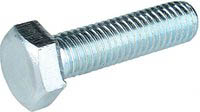The Present Perfect is formed by means of the auxiliary verb to have in the Present Indefinite and the Past Participle (Participle II) of the main verb.
In the interrogative form the auxiliary verb is placed before the subject. In the negative form the negative particle not is used after the auxiliary verb.
The Present Perfect is used:
- To express an action which took place before the present moment when the speaker's aim is to emphasize the present result of this action;
In this case the time of the action expressed by the Present Perfect is mostly not indicated. But it can be indicated in one of the following ways:
a) by means of adverbial modifiers denoting a period begun in the past and continued up to the present moment;
b) by means of adverbial modifiers denoting a period which has not yet ended;
c) by means of adverbial modifiers of indefinite time and frequency.
The Present Perfect is not used with adverbial modifiers of past time.
2. To express an action which began before the present moment and continued up to it In this case the proposition for is mostly used to indicate the period of duration. The starting point of the action is indicated by means of the word since.
In adverbial clauses of time and condition the Present Perfect in used to express an action completed before a definite future moment.

